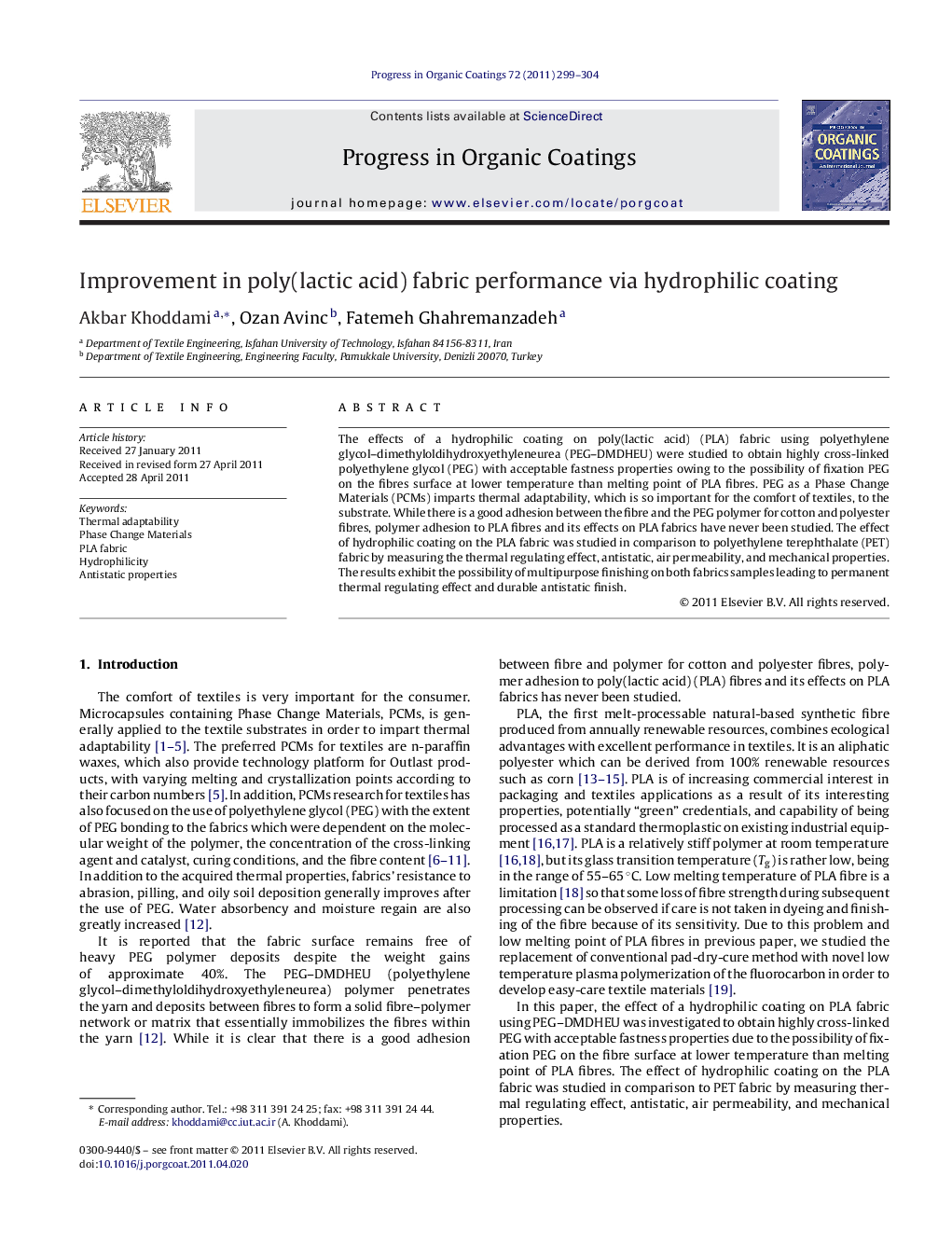| Article ID | Journal | Published Year | Pages | File Type |
|---|---|---|---|---|
| 692825 | Progress in Organic Coatings | 2011 | 6 Pages |
The effects of a hydrophilic coating on poly(lactic acid) (PLA) fabric using polyethylene glycol–dimethyloldihydroxyethyleneurea (PEG–DMDHEU) were studied to obtain highly cross-linked polyethylene glycol (PEG) with acceptable fastness properties owing to the possibility of fixation PEG on the fibres surface at lower temperature than melting point of PLA fibres. PEG as a Phase Change Materials (PCMs) imparts thermal adaptability, which is so important for the comfort of textiles, to the substrate. While there is a good adhesion between the fibre and the PEG polymer for cotton and polyester fibres, polymer adhesion to PLA fibres and its effects on PLA fabrics have never been studied. The effect of hydrophilic coating on the PLA fabric was studied in comparison to polyethylene terephthalate (PET) fabric by measuring the thermal regulating effect, antistatic, air permeability, and mechanical properties. The results exhibit the possibility of multipurpose finishing on both fabrics samples leading to permanent thermal regulating effect and durable antistatic finish.
► The effect of hydrophilic coating on the PLA fabric was compared with PET fabric. ► Low melting temperature of PLA fibre is a limitation for its processing like other textile fibres. ► The multipurpose finishing at lower temperature than melting point of PLA on both fabrics is introduced. ► By fixation PEG, permanent thermal regulating effect and durable antistatic finish was obtained. ► PLA showed superior thermal activity and static charge dissipation with no adverse effect on tensile properties.
